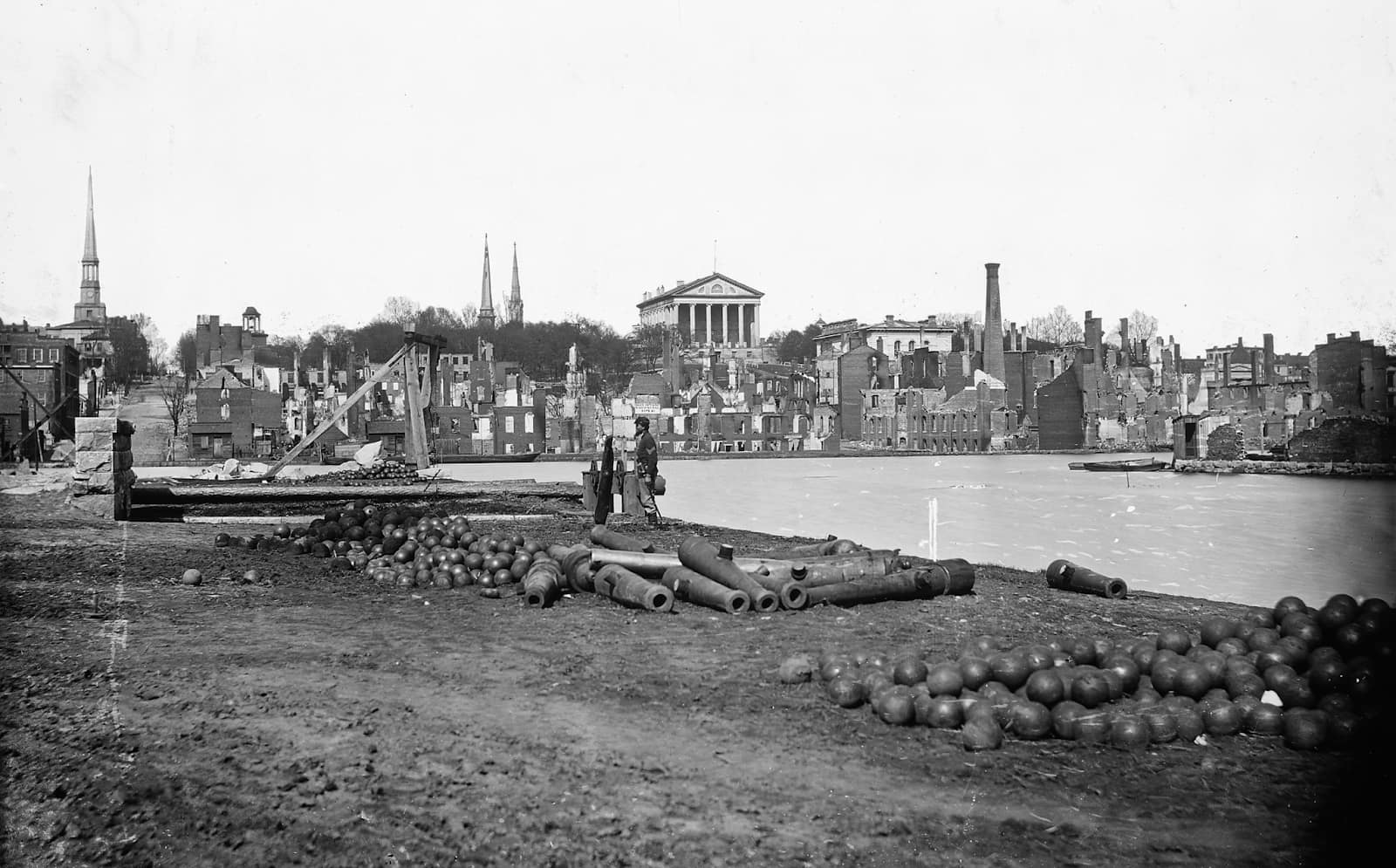Richmond’s Ascension as Confederate Capital
Following Virginia’s secession, the Confederate government relocated its capital to Richmond, Virginia’s second-largest city. This move was strategic, intertwining Virginia’s identity with the Confederacy and linking the rebellion with the American Revolution’s legacy. Crucially, Virginia’s industrial capacity was almost equal to the rest of the Confederacy, making Richmond an ideal choice.
Impact on Richmond’s Demographics and Economy
The designation of Richmond as the Confederate capital led to a tripling of its population. The city swelled with soldiers, profiteers, refugees, and the war-injured, causing shortages, inflation, and a surge in hospital and prison constructions. This influx profoundly altered Richmond’s social and economic landscape.
Government and Bureaucratic Expansion in Richmond
Richmond hosted three governments during the Civil War: city, state, and Confederate. The influx of bureaucrats and office-seekers into the city led to the shared use of the Virginia State Capitol by the Confederate Congress and the Virginia General Assembly. Nearby, departments like treasury and state were established, and the Confederate White House was only blocks away.
Industrial and Military Significance
Richmond’s pre-war economy was transformed to support the Confederacy’s military needs. Factories like Tredegar Iron Works were repurposed for war production, creating ordnance, railroad equipment, and naval supplies. By 1864, Richmond had become a central hub for the Confederacy’s war material production.
The Human Cost of War Production
The perilous task of ammunition production in Richmond fell largely to women and children. At the Confederate States Laboratory, nearly 300 employees, many under sixteen, risked their lives daily, highlighting the war’s impact on civilian life and the tragic human cost of conflict.
Healthcare and Prison Systems in Wartime Richmond
Richmond’s role as a medical and prison hub during the war was significant. The city established numerous hospitals, such as Chimborazo and Winder, to treat thousands of Confederate soldiers. Additionally, converted warehouses served as prisons for captured U.S. soldiers, notably the infamous Libby Prison.
Post-War Transformation and Commemoration
Post-Civil War, Richmond transformed. The city rebuilt itself from war-induced ruins, redefining its identity and commemorating its role in the Confederacy. Notable sites like Hollywood Cemetery became final resting places for Confederate and U.S. leaders, marking Richmond’s lasting connection to this historical period.
Comparative Analysis of Richmond’s Civil War Role
| Aspect | Description |
|---|---|
| Capital Relocation | Strategic move to Richmond to bolster the Confederacy’s identity. |
| Demographic Changes | Population growth, bringing diverse groups and challenges. |
| Government Expansion | Hosting city, state, and Confederate governments. |
| Industrial Transformation | Shift from agriculture to military production. |
| Human Cost | Significant civilian involvement in war efforts, often perilous. |
| Medical and Prison Role | Establishment of numerous hospitals and prisons. |
| Post-War Commemoration | Efforts to rebuild and memorialize the city’s historical significance. |
Maymont Estate: A Glimpse into Post-War Richmond
Maymont Estate, a 100-acre Victorian estate in Richmond, VA, stands as a symbol of the city’s post-Civil War transformation. Established by James and Sallie Dooley in the late 19th century, this estate exemplifies the shift from war-torn devastation to cultural and economic revival. Maymont’s architecture, gardens, and arboretum reflect the era’s opulence and serve as a testament to Richmond’s resilience and adaptation in the post-war period.
Conclusion
Richmond’s role as the Confederate capital was pivotal during the Civil War, impacting its social, economic, and political landscape. The city’s transformation from an agricultural hub to an industrial and military center highlights the complexities of its history and its enduring legacy in American history.
